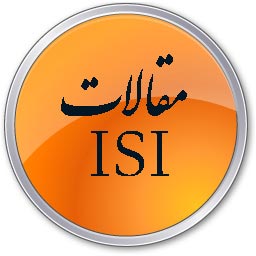الگوریتم پیش بینی حالت اصلاح شده ی مبتنی بر UKF
| دسته بندی | مقالات ترجمه شده isi |
| بازدید ها | 9 |
| فرمت فایل | doc |
| حجم فایل | 849 کیلو بایت |
| تعداد صفحات فایل | 9 |


Modified state prediction algorithm based on UKF
Abstract: The state prediction based on the unscented Kalman
filter (UKF) for nonlinear stochastic discrete-time systems with linear
measurement equation is investigated. Predicting future states
by using the information of available measurements is an effective
method to solve time delay problems. It not only helps the system
operator to perform security analysis, but also allows more time for
operator to take better decision in case of emergency. In addition,
predictive state can make the system implement real-time monitoring
and achieve good robustness. UKF has been popular in state
prediction because of its advantages in handling nonlinear systems.
However, the accuracy of prediction degrades notably once
a filter uses a much longer future prediction. A confidence interval
(CI) is proposed to overcome the problem. The advantages of CI
are that it provides the information about states coverage, which is
useful for treatment-plan evaluation, and it can be directly used to
specify the margin to accommodate prediction errors. Meanwhile,
the CI of prediction errors can be used to correct the predictive
state, and thereby it improves the prediction accuracy. Simulations
are provided to demonstrate the effectiveness of the theoretical
results.
الگوریتم پیش بینی حالت اصلاح شده ی مبتنی بر UKF
چکیده
پیشبینی حالت مبتنی بر فیلتر کالمن بدون بو (UKF) برای سیستمهای زمان-گسستهی تصادفی غیرخطی با معادلهی اندازه گیری خطی بررسی میشود. پیشبینی حالتهای آتی با استفاده از اطلاعات اندازهگیری موجود روشی موثر برای حل مسائل تاخیر زمانی است. این پیشبینی نه تنها به اپراتور سیستم به منظور انجام آنالیز امنیتی کمک میکند، بلکه زمان بیشتری را برای اپراتور برای گرفتن تصمیم بهتر در موارد اضطراری فرض میکند. علاوه بر این، حالت پیشبینی موجب میشود که سیستم نظارت در زمان واقعی را پیادهسازی کند و قدرتمندی خوبی را هم به دست بیاورد. رایج بودن UKF در حالت پیشبینی به دلیل مزایای آن در مدیریت سیستمهای غیرخطی است. با اینحال، دقت پیشبینی به ویژه زمانی که فیلتر از پیشبینی آتی بسیار طولانیتر استفاده میکند کاهش مییابد. یک فاصله اطمینان (CI) به منظور غلبه بر مسائل ارائه میشود. مزایای استفاده از CI این است که این اطلاعات در مورد پوشش حالات را ارائه میکند، که برای ارزیابی طرح-بررسی مفید است، و میتوان از آن بطور مستقیم به منظور مشخص کردن حاشیه به جای خطاهای پیشبینی استفاده شود. در همین حال، CI خطاهای پیشبینی میتواند به منظور اصلاح حالت قابل پیشبینی استفاده شود، و در نتیجه دقت پیشبینی را بهبود دهد. شبیهسازیها به منظور نشان دادن اثربخشی نتایج تئوری ارائه میشوند.
.

